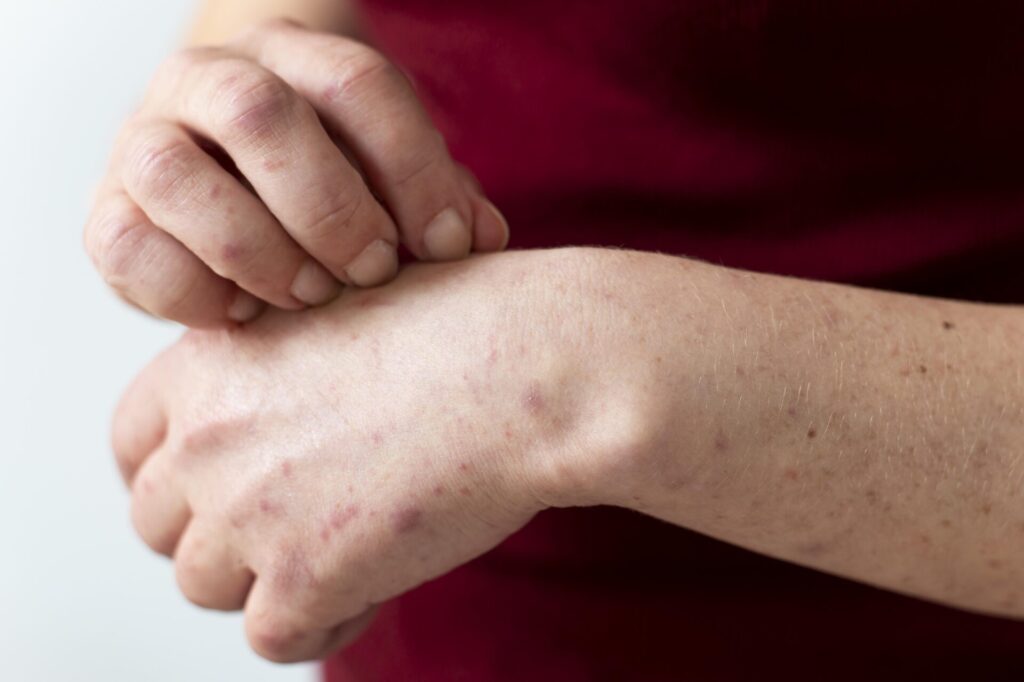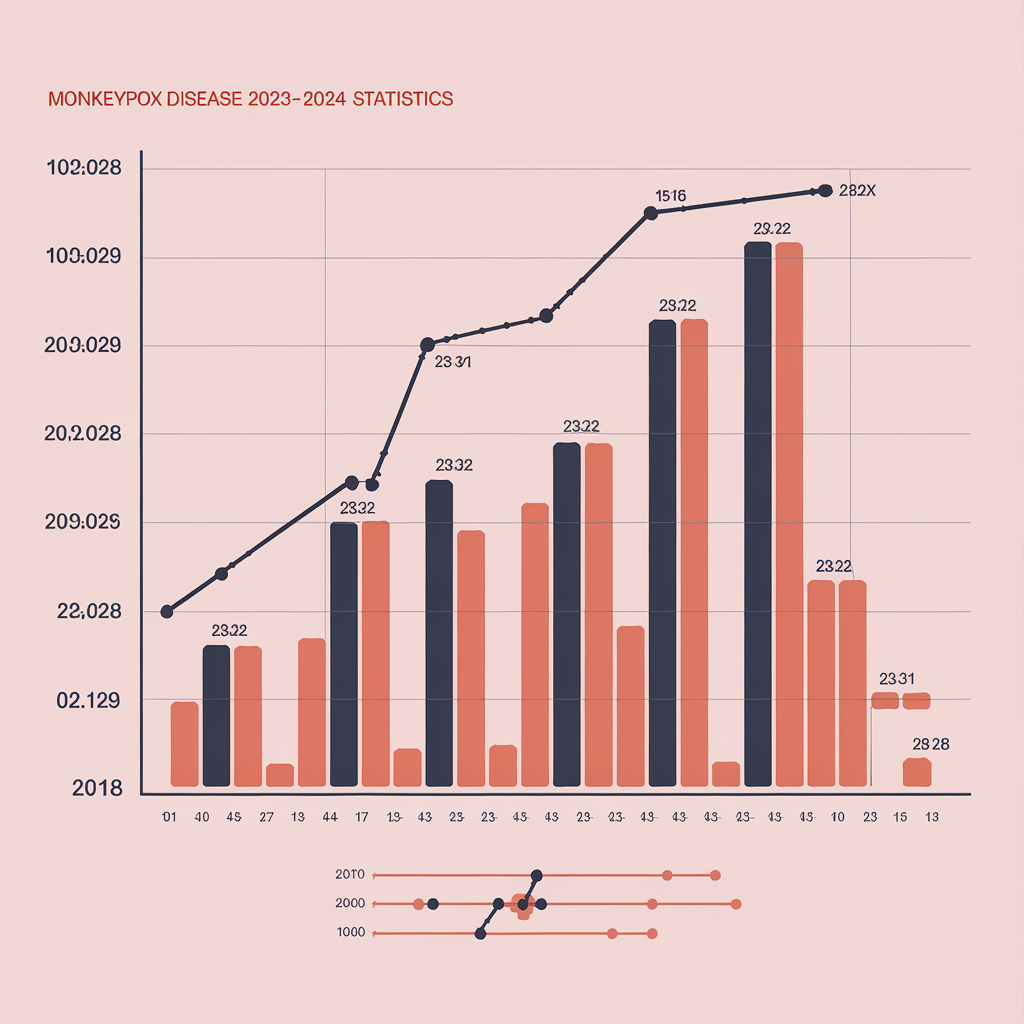Mpox in Numbers: A Detailed Look at the 2023-2024 Statistics
Contents
- 1 Mpox in Numbers: A Detailed Look at the 2023-2024 Statistics
- 1.1 1. Global Cases and Incidence Rates
- 1.2 read more posts
- 1.3 2. Regional Distribution
- 1.4 read more posts
- 1.5 3. Mortality Rates and Severity
- 1.6 read more posts
- 1.7 4. Vaccination Coverage and Effectiveness
- 1.8 read more posts
- 1.9 5. Healthcare Costs and Economic Impact
- 1.10 read more posts
- 1.11 Conclusion
- 1.12 read more posts
- 1.13 FAQs with Answers
Read DISCLAIMER
Explore the key statistics of mpox for 2023 and 2024, including global case numbers, mortality rates, regional distribution, and vaccination efforts. Gain insights into the impact and management of this disease in this detailed analysis.
Monkeypox, often known as mpox, has become a serious public health issue, especially in the wake of widespread outbreaks. Gaining knowledge about the disease’s statistics can help one better understand how it spreads, what effects it has, and how well public health initiatives are working. This blog provides a thorough analysis of the most important mpox statistics for the years 2023 and 2024, emphasizing trends, regional distribution, and immunization campaigns.

1. Global Cases and Incidence Rates
In comparison to prior years, there was a noticeable rise in the global incidence of mpox in 2023. By the end of 2023, the World Health Organization (WHO) estimated that 47,000 cases had been reported globally. Comparing this to the 2022 figures, which were estimated to be approximately 35,000 instances, showed a notable increase.
The figures for 2024 remained erratic because to ongoing outbreaks and different public health initiatives. The WHO states that there are over 25,000 cases worldwide as of mid-2024; the rate of new cases arising is marginally lower than the peak observed in 2023. Public health initiatives and increased vaccination rates are to blame for this decline.
read more posts
2. Regional Distribution
By geography, the distribution of mpox cases varies dramatically. In 2023, the Democratic Republic of the Congo (DRC) and Nigeria were the most impacted nations, with the bulk of cases reported in Central and West Africa. Mumps is regarded as endemic in some areas, where instances occur on a consistent basis.
But in 2023, there was a discernible change as more cases were reported in non-endemic nations, especially in Europe and the Americas. For example, the United States reported more than 5,000 cases in 2023, with major epidemics in major areas such as Los Angeles and New York. In a same vein, mpox instances increased in European nations like Germany, France, and the United Kingdom.
By mid-2024, the situation in endemic regions remained relatively stable, while non-endemic countries continued to report cases, albeit at a reduced rate compared to 2023. This shift highlights the global reach of mpox and the importance of international surveillance and response.
read more posts
3. Mortality Rates and Severity
The clade of the virus and the health of the afflicted person determine how severe the mpox is. The anticipated 2023 worldwide mpox mortality rate was 3%. The West African clade exhibited a lower mortality rate of less than 1%, while the Central African clade displayed a higher incidence of roughly 10%.
Globally, the overall mortality rate dropped to about 2.5% by 2024 as a result of advancements in treatment options and healthcare accessibility. Because of improved management and early intervention, the overall case fatality rate was decreased even while the mortality rate for the Central African clade remained higher.
read more posts
4. Vaccination Coverage and Effectiveness
Vaccination campaigns have proven to be essential in controlling mpox epidemics. With approximately 10 million vaccinations given globally in 2023, vaccination coverage grew dramatically on a global scale. Among other vaccines, JYNNEOS was crucial in preventing the mpox virus from spreading.
By the middle of 2024, vaccination coverage had increased even more, with about 15 million doses given. The stabilizing of case numbers in non-endemic regions and the averting of larger outbreaks are attributed to this increase.
Studies have demonstrated that the vaccination is around 85% efficient at preventing serious illness and its spread. It is anticipated that ongoing immunization programs and booster shots will remain essential to the management of mpox.
read more posts
5. Healthcare Costs and Economic Impact
The global economic burden of mpox was estimated to be over $1 billion in 2023, including direct healthcare costs and indirect costs like lost productivity and travel restrictions. For 2024, the economic impact has been somewhat mitigated by the stabilization of case numbers and the scaling up of vaccination efforts, though ongoing investments in public health infrastructure and outbreak preparedness remain crucial. The economic impact of mpox has been substantial, with healthcare costs associated with managing outbreaks, treatment, and vaccination efforts.
read more posts
Conclusion
The mpox data for 2023 and 2024 paint a complicated picture of a disease that has persisted in changing and spreading. The effectiveness of public health initiatives and vaccination campaigns is demonstrated by the stabilization of the global mpox incidence in 2024, despite a notable increase in cases worldwide in 2023. Knowing these figures is useful not only for evaluating the situation of mpox at the moment but also for organizing future actions and expenditures related to global health.
Maintaining surveillance, research, and international collaboration will be essential in controlling the mpox virus going ahead and averting further outbreaks. Through analysis of the data and integration into public health plans, we can enhance population protection and lessen the influence of mpox on world health.
read more posts
FAQs with Answers
1. What was the global number of mpox cases in 2023?
In 2023, there were approximately 47,000 reported cases of mpox worldwide.
2. How did mpox case numbers change in 2024?
By mid-2024, the global number of mpox cases was over 25,000, showing a decrease compared to the peak in 2023.
3. Which regions experienced the highest number of mpox cases in 2023?
Central and West Africa had the highest number of mpox cases, particularly in the Democratic Republic of the Congo and Nigeria.
4. How does the mpox mortality rate vary by clade?
The Central African clade has a mortality rate of around 10%, while the West African clade has a lower rate of less than 1%.
5. What was the global mortality rate for mpox in 2023?
The global mortality rate for mpox in 2023 was approximately 3%.
6. How effective is the JYNNEOS vaccine against mpox?
The JYNNEOS vaccine has shown about 85% efficacy in preventing severe disease and transmission.
7. What impact did mpox have on healthcare costs in 2023?
The global economic burden of mpox in 2023 was estimated at over $1 billion, including healthcare costs and indirect costs.
8. How has vaccination coverage changed from 2023 to 2024?
Vaccination coverage increased from over 10 million doses in 2023 to approximately 15 million doses in 2024.
9. Which countries outside of Africa experienced significant mpox outbreaks in 2023?
Countries in Europe and the Americas, including the United States and several European nations, experienced significant outbreaks.
10. What were the key factors in reducing mpox case numbers in 2024?
Increased vaccination coverage and improved public health measures contributed to the reduction in mpox case numbers in 2024.
11. How does the mpox rash differ from that of smallpox?
Mpox rash often includes swollen lymph nodes and tends to be more localized compared to the more severe and widespread rash of smallpox.
12. Can mpox be transmitted from animals to humans?
Yes, mpox can be transmitted from animals to humans, particularly through direct contact with infected animals or their bodily fluids.
13. What are the main symptoms of mpox?
Main symptoms include fever, headache, muscle aches, and a rash that can start on the face and spread to other parts of the body.
14. What steps are being taken to manage mpox outbreaks?
Steps include surveillance, isolation of cases, vaccination, and public health education.
15. How has the economic impact of mpox been addressed?
Efforts to manage and stabilize outbreaks have helped mitigate the economic impact, but continued investments in public health are necessary.
Read more about Mpox
Mpox in 2024: What Weve Learned and What Lies Ahead
Is Mpox Becoming More Contagious? Understanding the Risks and Trends in 2024
Mpox and Climate Change: A Growing Concern
Long-Term Health Effects of Mpox: What We Know So Far rm-health-effects-of-mpox-what.html
Mpox and Global Health Security: Lessons Learned
Addressing Mpox Stigma and Discrimination: A 2024 Perspective
The Role of Contact Tracing in Mpox Prevention

Thank you for your sharing. I am worried that I lack creative ideas. It is your article that makes me full of hope. Thank you. But, I have a question, can you help me?
Thanks for sharing. I read many of your blog posts, cool, your blog is very good.
Thank you for your sharing. I am worried that I lack creative ideas. It is your article that makes me full of hope. Thank you. But, I have a question, can you help me?
Thanks for sharing. I read many of your blog posts, cool, your blog is very good.
Can you be more specific about the content of your article? After reading it, I still have some doubts. Hope you can help me.